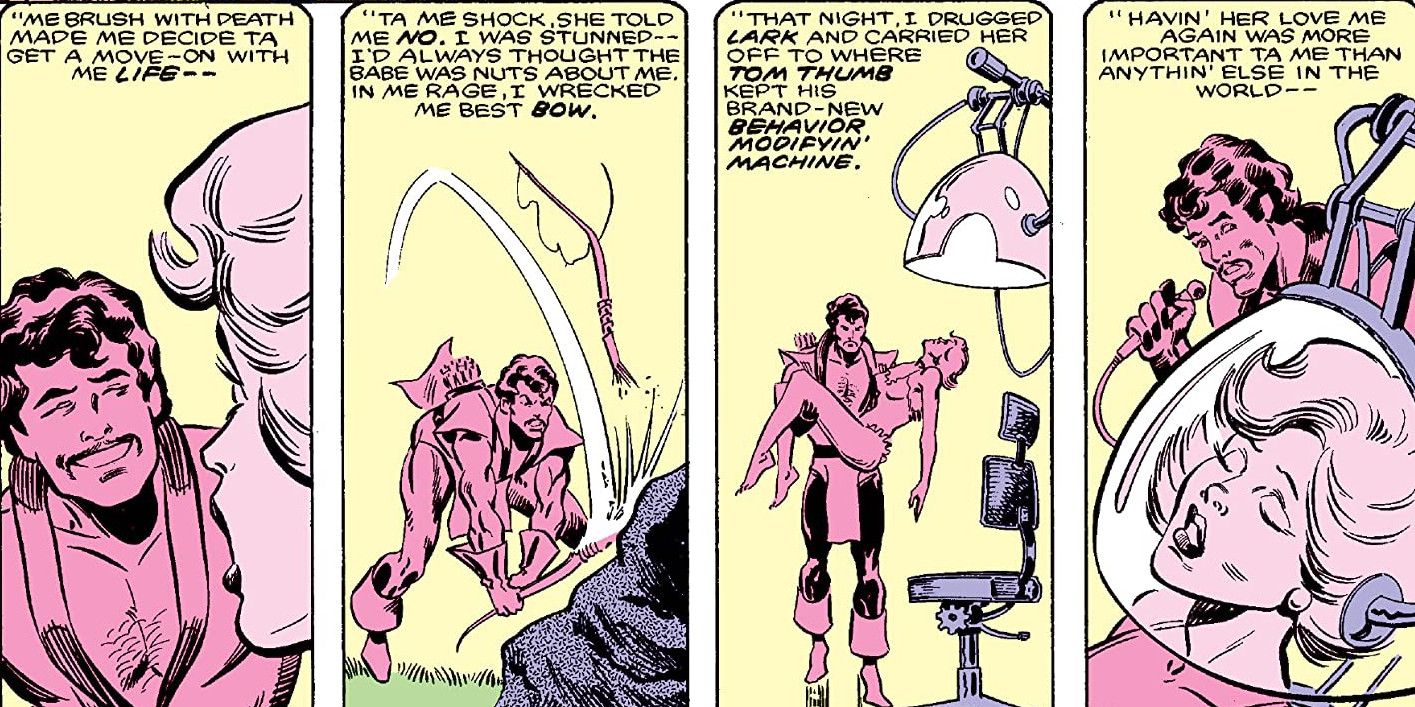It wouldn’t be a stretch to say the current glut of evil Supermen dominating pop culture owe a debt to Mark Gruenwald’s Marvel series Squadron Supreme, an epic tale of utopian intentions gone horribly wrong. Though vastly underrated, everything from Injustice and Watchmen to The Boys and Invincible owe a debt to the ground-breaking miniseries. While the team has a starring role in the recent Heroes Reborn crossover, this is far from the first time the Squadron Supreme has found them presiding over a hellish alternate version of the US.
The Squadron Supreme are essentially Marvel’s answer to the Justice League, so much so that they are near-carbon copies of the League. While they were most recently featured as the antagonists in the Mephistro-controlled reality of Heroes Reborn, they weren’t always the bad guys. In fact, they were once the heroes of their own twelve issue miniseries published in 1985 by Marvel. Written by the legendary Mark Gruenwald and illustrated by the Bob Hall, Paul Ryan, Paul Neary and John Buscema, Squadron Supreme opens with society already on the verge of collapse. Batman pastiche Nighthawk steps down as President of the United States, allowing the team to ultimately take control of the government. Their resident genius, Tom Thumb, creates a behavioral modification device. This is ultimately used to indoctrinate villains into their ranks. Meanwhile, Nighthawk allies himself with the remaining villains to form the Redeemers. The final battle claims the lives of several characters, including Nighthawk, causing the remaining members to finally surrender.
Mark Gruenwald’s epic comic helped pioneer the social dilemma of superheroes, debuting a full year before Watchmen. In particular, the premise of both Injustice and Civil War share quite a lot in common with Squadron Supreme, especially in regards to competing factions of both heroes and villains fighting for supremacy. What makes Squadron Supreme unique is it sits (somewhat uncomfortably) between two eras of comic books. On one hand, Gruenwald’s miniseries focuses on the soap opera-ish elements of the characters’ personal lives, as also seen in Chris Claremont’s X-Men at the time. One the other hand, it also features a dark undercurrent concerning the abuse of power, more in keeping with the gritty Modern Age comics to follow. This is especially seen as the various members of the Squadron Supreme each struggle with the limits of their power, grappling with both morality and mortality in a flawed yet honest characterization of superheroes occurring just months before Watchmen.

This unique focus is best illustrated when the Green Arrow-inspired Golden Archer brainwashes his girlfriend Lady Lark after she turns down his wedding proposal. The process works too well, and Lady Lark is left obsessed with him for the rest of the series. Expelled from the team and stricken with remorse, Golden Archer joins Nighthawk’s Redeemers, where he ultimately dies seeking to atone. What’s interesting is that Golden Archer’s narrative arc presents both the Bronze Age heroism and Modern Age deconstructionism as two halves of the same coin, and it’s here where the series really works.
Squadron Supreme shines as a supremely (no pun intended) underrated superhero comic that pushed the medium forward without losing sight of its themes or characters. While the book remains a product of its time in terms of style, it explores the same ground of similar works with nuance and a healthy dose of heart. Fans of the likes of Invincible and The Boys should check out Squadron Supreme, a ground-breaking series that depicted superheroes in a completely different light.




